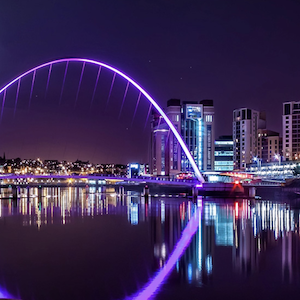Building AI
By Jo Phillips
How Artificial Intelligence Will Change Architecture
Artificial intelligence can sometimes feel like a buzzword that businesses and companies use to describe a dystopian technology. Artificial intelligence (AI), as it matures, will become very useful in a lot of different areas, and could prove to be a very important tool in design-oriented industries such as architecture. Architects already use past data to enhance their current designs, so having a tool that can help them do this in less than a second will go a long way in changing how architects work and the results they produce.
AI Will Change Architectural Basics
An architectural project takes a lot of planning. At this stage, an architect looks through a lot of data to find a design that fits the project. They also have to consider if this new design is an improvement on the designs of the past.
AI can take in limitless amounts of data and help an architect research and test various innovative designs to see which one would work best in the project they are working on. An added advantage is that all this will be done with no papers, pens, or rulers.
Better Construction and Planning
Before construction can start, the building has to be planned. At this stage, the architect has to think about how to bring their models to life, but this takes a lot of effort. Artificial Intelligence can make this easier by taking in data and coming up with new modes that save the architect and other contractors a lot of time and energy.
During construction, AI can become a companion for human estimation tools. A good example is when an architect needs to know if a building can hold a roof without collapsing. To know this, they need to know how much load the building can bear. The contractor or civil engineer starts by using a concrete calculator to estimate the amount of concrete they will need for the foundation.
Once they plug in all their data into a concrete mix calculator and get their result, they can feed that result into an AI to determine if the building has the load-bearing capacity to hold up a roof or an additional floor. The contractor can then order the right quantity of ready-mix concrete to serve the concrete needs of both residential and commercial projects. The results that come out of the concrete calculator can also be used together with those that come out of a screed calculator to see if a floor will bear certain load once the building is completed and occupied.
Use of Drones in Construction
Designers and contractors are already using drones in construction projects. Drones can use cameras to collect data about a location and then use AI to create models and create cost estimates. These drones can also be used to scan past designs and use that data to come up with new designs that fit the building environment in question.
Drones can also be used to check the progress of ongoing works to see if the construction is being undertaken following the architect’s designs. These drones can then send this progress data to an AI system to see how long the project will take at the current pace, which will help keep everyone on schedule.
Smarter Cities of the Future
Cities in the future will look very different from the way they do now. The way cities will be planned will challenge architects to rethink the way they design buildings. This is so that they can not only be in conformity with the city plans they need to fit into, but also to other requirements like the eco-friendliness of their designs and how they will impact the ecosystems they exist in.
Smart cities, ones where everything is automated and connected, are coming. These smart cities will be driven by AI and will have to be constructed in ways that ensure everything keeps flowing as they ought to.
Smart Designs
The smart cities we have discussed above will need smart buildings and other smart structural features. Architects will need to leverage the power of AI to come up with designs that fit into this smart future. Architects will also have to ensure the designs they come up with are user friendly and offer a unique user experience. This user experience can be tested and tweaked inside a simulated model before the construction begins. All this will be done using AI.
With how Ai will be used in architecture in the future, it is easy to conclude that architects will have to change from providing designs to providing experiences, After all, if an AI can come up with the design, all that will be left will be for the architect to inject some human element into every project they complete. Because of this, AI will be a tool that will be used to help architects and not to replace them.



